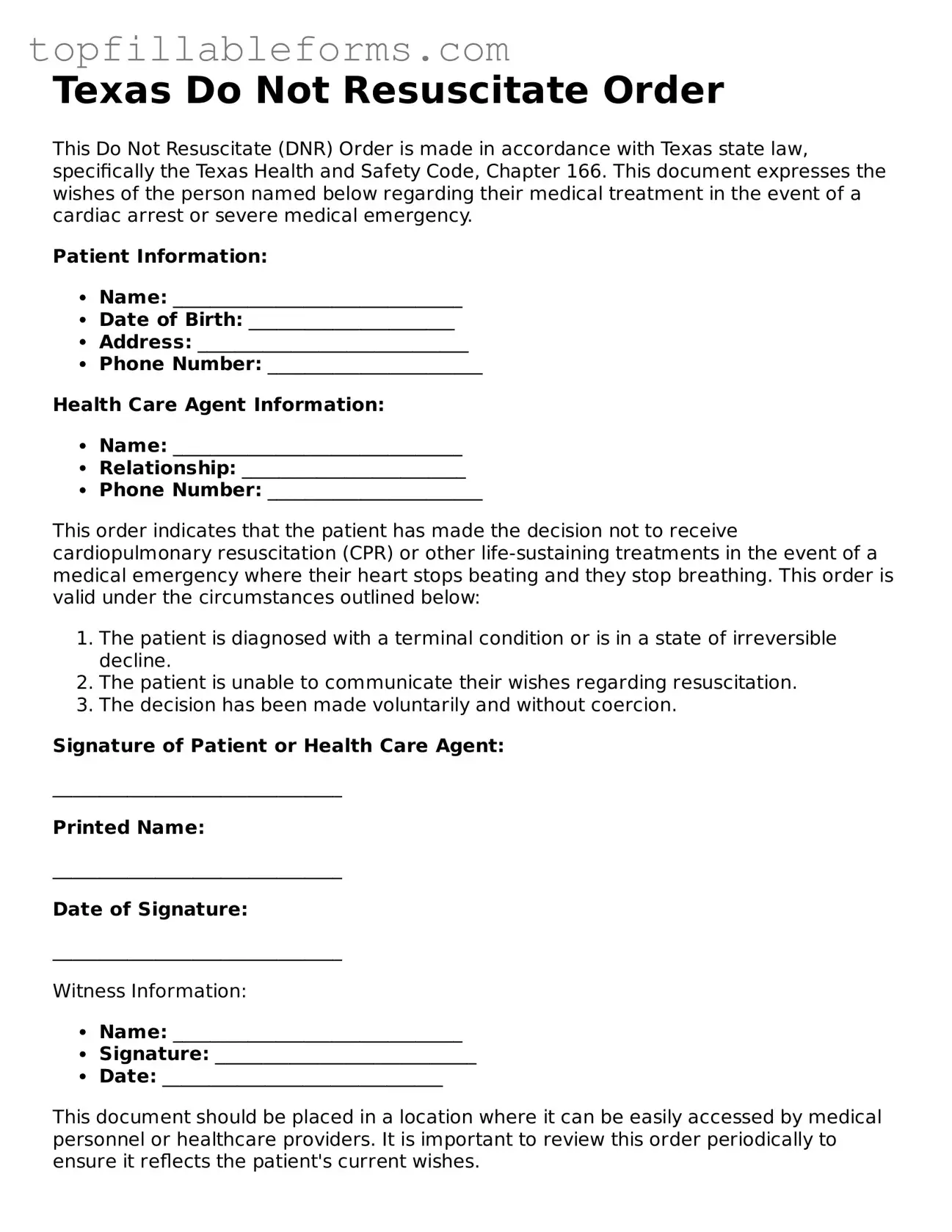Texas Do Not Resuscitate Order
This Do Not Resuscitate (DNR) Order is made in accordance with Texas state law, specifically the Texas Health and Safety Code, Chapter 166. This document expresses the wishes of the person named below regarding their medical treatment in the event of a cardiac arrest or severe medical emergency.
Patient Information:
- Name: _______________________________
- Date of Birth: ______________________
- Address: _____________________________
- Phone Number: _______________________
Health Care Agent Information:
- Name: _______________________________
- Relationship: ________________________
- Phone Number: _______________________
This order indicates that the patient has made the decision not to receive cardiopulmonary resuscitation (CPR) or other life-sustaining treatments in the event of a medical emergency where their heart stops beating and they stop breathing. This order is valid under the circumstances outlined below:
- The patient is diagnosed with a terminal condition or is in a state of irreversible decline.
- The patient is unable to communicate their wishes regarding resuscitation.
- The decision has been made voluntarily and without coercion.
Signature of Patient or Health Care Agent:
_______________________________
Printed Name:
_______________________________
Date of Signature:
_______________________________
Witness Information:
- Name: _______________________________
- Signature: ____________________________
- Date: ______________________________
This document should be placed in a location where it can be easily accessed by medical personnel or healthcare providers. It is important to review this order periodically to ensure it reflects the patient's current wishes.
